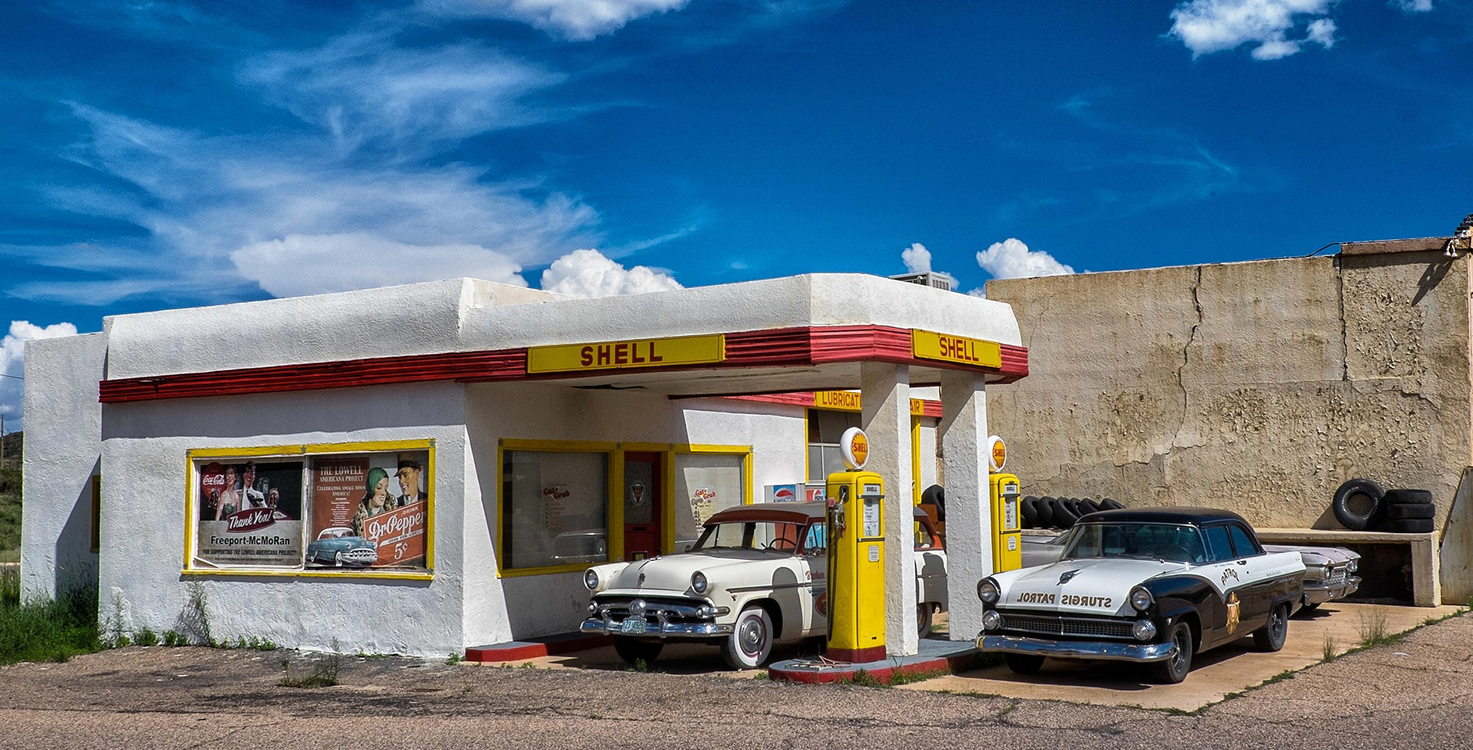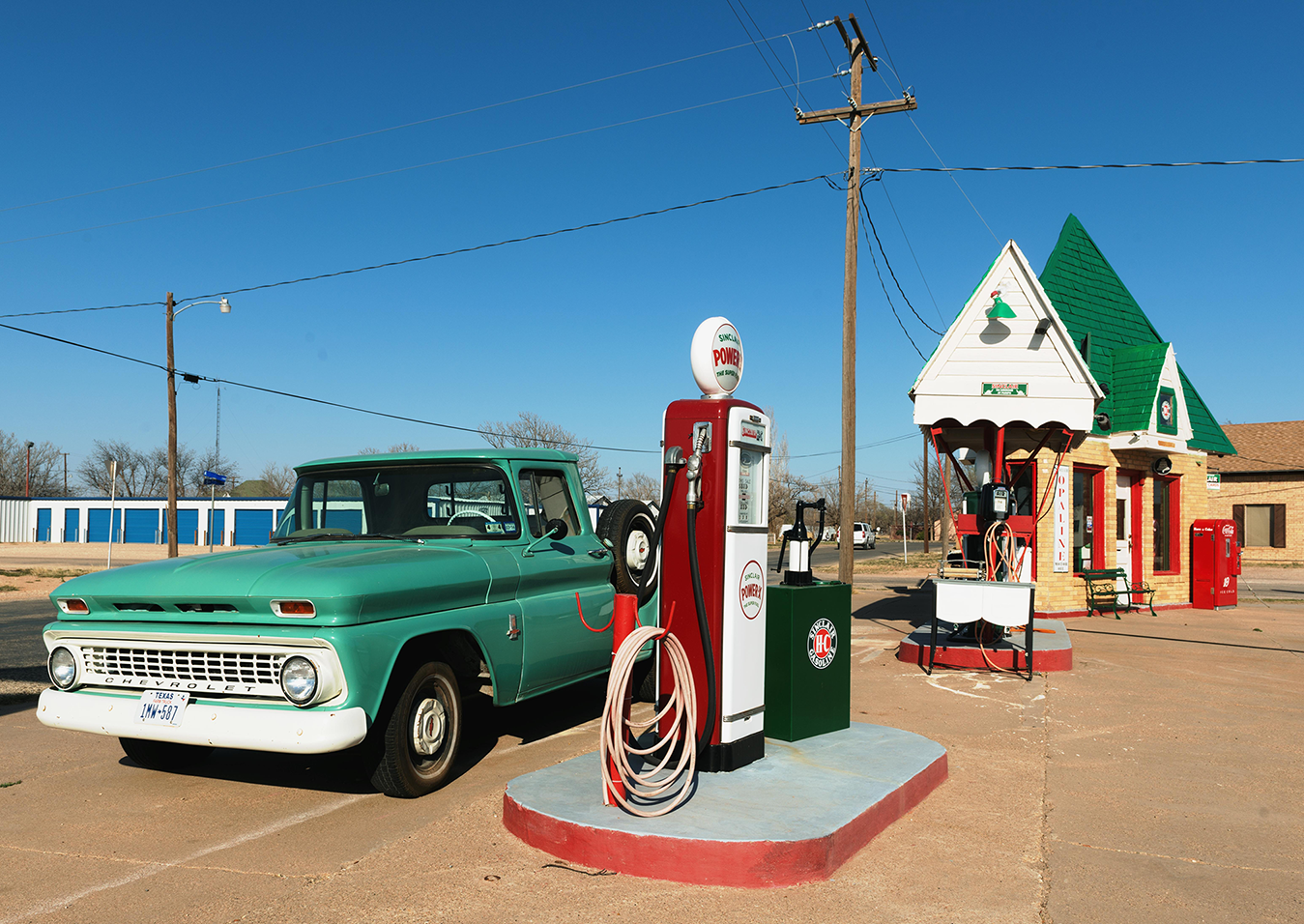SSCS Goes to (Near) the White House
The history of the gas station intertwines with America’s own.
If today’s convenience store represents all that’s bright and colorful in the world of commercial innovation—a phenomenon of an industry that’s captured the global imagination—the business out of which it (largely) grew provides a contrast.
That would be the gas station.
Convenience stores are associated with modernity, a kind of barometer for what’s happening next in retail. No one’s looking backward.
The gas station, on the other hand, resonates with echoes from the past, most intensely in the U.S. Before getting swallowed up in the excitement generated by the convenience stores operating within them, gas stations stood on their own as the defining face of retail petroleum. Composed of small, plentiful, and—for the most part—humble buildings (with hundreds of strikingly eccentric exceptions), gas stations capture another kind of imagination, one that incorporates nostalgia, Americana, and sustenance for the artistic mind.
We didn’t make this distinction—probably weren’t capable of making it—until we began to curate convenience store and gas station-related news from around the world. We’ve tweeted out plenty of features containing historic gas station photos, and you’ve probably seen a handful of SSCS blog posts celebrating the “art” of the gas station.
But that’s only scratching the surface. You can find many kinds of media that celebrate the growth and development of the gas station, most of them well-illustrated, every one of them offering a window of some size into the past, not merely of the industry, but of the country in which we live.
Because of this, we’re going to list a few of these sources for your convenience (no pun intended). Though we haven’t thoroughly reviewed them and, therefore, can’t make recommendations regarding their content (or their availability), in each case they looked at least interesting enough to explore, so here they are in no particular order:
The History of the Gas Station by John A. Jakle and Keith A. Sculle — This is one we see coming up again and again in the course of our research, though it is now over 20 years old. Written together by a geographer and a historian, this book looks at the importance of the gas station from several different historical perspectives. The Economic History Association provides this insightful review.
We’ve covered David Freund’s Gas Stop, a four-volume art book containing images of gas stations from the late 70’s to the early 80’s. Fordham University is exhibiting the photographs through March 30. If you’re in the Manhattan area you might want to check it out.
Many of the more interesting historical websites are regional ones. This one from the Wisconsin Historical Society is a good example. It also includes a link to a Wisconsin Public Television series on the subject. There’s plenty of other links to this page, as well, with lots of information. This site does much of the same, only for the state of Michigan. And while the text is pretty light, you’ll see plenty of pictures of old California stations here
This blog post, on the other hand, is more of a personal reminiscence to provide a “you were there” perspective. Look for the mention of our corporate partner, Sunoco, and the custom blending of gas the company provided to vehicle owners in 1960. Six grades of gas were available at one pump!
In addition, we’d be remiss if we didn’t mention that most petroleum suppliers recount the history of their own brand somewhere on their own website with historical photos that, in some cases, are filled with images not available elsewhere. They’re definitely worth checking out, too.
The gas stations of the past may not fire the imagination in quite the same way as the convenience palaces that currently dominate the retail petroleum market. But they provide a foundation and a substance to the industry that adds to its distinctiveness and helps it resonate with the American consumer.









Leave A Comment